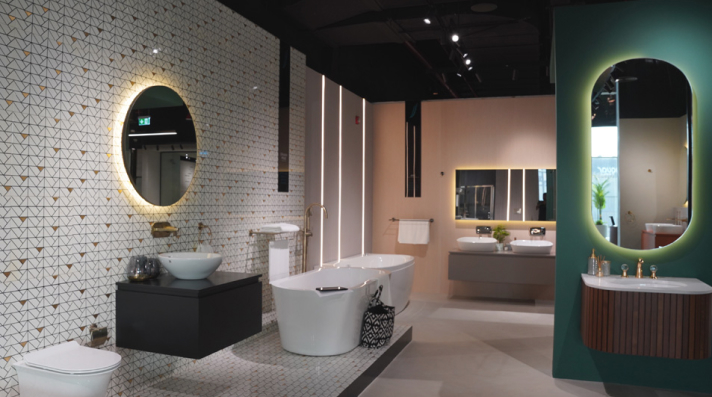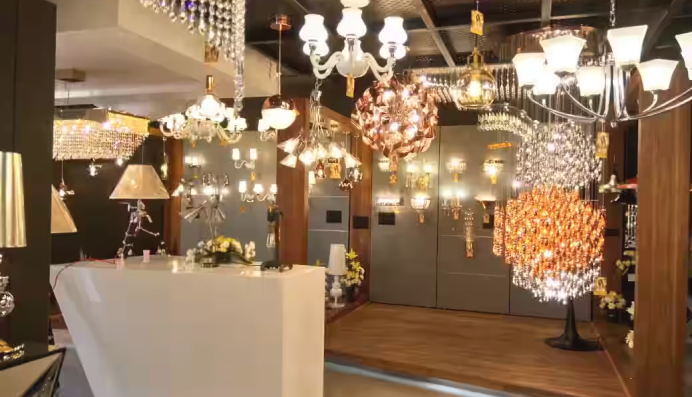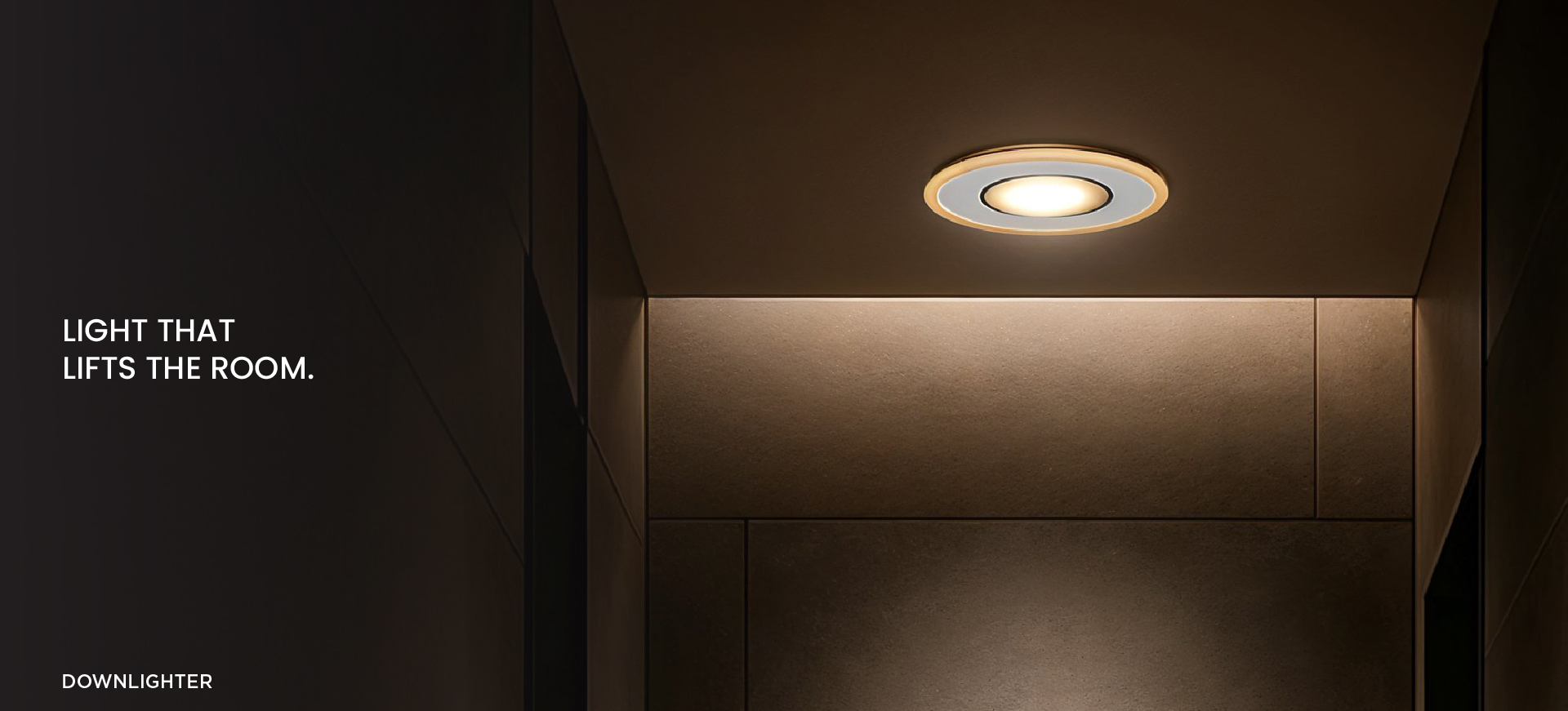Step into a room bathed in cosy light, and you feel instantly relaxed. Enter the very same space under the glare of harsh fluorescents, and your nerves might just start humming a frantic, high-pitched tune. This dramatic difference is the core of atmosphere, comfort, and performance.
Lighting is the unseen architect of your mood, determining whether you feel productive, serene, or utterly exhausted, proving that the quality of light is as vital as the furniture in crafting a space that looks good and feels right.
The Science of Mood: Light's Biological Impact
The profound effect of light starts deep within your brain, regulating your circadian rhythm, your body’s natural 24-hour clock. This rhythm is directly influenced by light exposure, governing the release of critical hormones.
During the day, bright light (especially blue wavelengths) triggers Serotonin for alertness and focus. As the sun sets, the drop in blue light signals the body to produce Melatonin, preparing you for restful sleep. Exposing yourself to cool, bright, or blue-toned artificial light late in the evening can suppress this essential melatonin, disrupting your sleep cycle and increasing long-term stress.
Understanding Light’s Emotional Spectrum
The quality and temperature of light have a direct, measurable impact on human psychology. This principle is the foundation for setting the ideal mood in every room.
- Warm White (2700K - 3000K): This lower end of the spectrum mimics the light of a sunset or a traditional fire, creating a sense of cosiness, intimacy, and relaxation. It is ideal for winding down in living rooms, bedrooms, and dining areas, encouraging calm and conversation.
- Neutral White (3500K - 4000K): A balanced and versatile light, this tone is excellent for general living spaces that require both clarity and a welcoming feel, such as open-plan kitchens and hallways.
- Cool White (4000K - 5000K): Closely resembling natural midday light, this temperature promotes alertness, focus, and clarity, making it the superior choice for task-oriented areas such as home offices, laundry rooms, and workshop spaces where concentration is crucial.
Beyond colour, the sheer intensity of the light also impacts your emotional state. While high brightness is necessary for detailed tasks, excessively bright light can intensify all emotions, both positive and negative, often leading to anxiety or mental fatigue. Conversely, dimming the lights is a simple, effective tool for signaling the body to relax and transition into a calmer state.
Layering for Flexibility
To truly control your home's mood, you must employ layered lighting, a mix of light sources that provides versatility and depth. Relying on a single overhead fixture is the quickest way to create a flat, uninviting space.
- Ambient Lighting: This is the primary layer, providing overall, uniform illumination. It is the foundation that prevents harsh shadows and ensures general visibility. Recessed downlights, flush-mount fixtures, or well-distributed floor lamps serve this purpose.
- Task Lighting: Focused and functional, this layer is crucial for specific activities. Pendant lights over a kitchen island, a desk lamp in a study, or sconces next to a mirror are examples that eliminate eye strain and improve efficiency.
- Accent Lighting: Designed to draw attention, this layer highlights architectural details, artwork, or textures. It adds a dramatic flair and the final touch of refinement, often using spotlights or wall washers.
Integrating Ceiling Track Lighting
Ceiling track lighting is the ultimate tool for flexible layering. This system allows you to mount multiple adjustable fixtures on a single track, making it easy to fulfill both the Task and Accent roles in one installation.
Because the individual light heads can be moved and repositioned without re-wiring, a track system is ideal for:
- Galleries and Living Rooms: Spotlighting changing artwork or furniture arrangements.
- Kitchens and Offices: Directing focused, high-clarity light onto a counter or desk where task work is needed.
Setting the Vibe: The Right Light for Every Space
The right light depends entirely on the room's function:
|
Rooms |
Desired Mood/Function |
Recommended lighting Strategy |
|
Living Room |
cosy, social, versatile |
Layer with floor and table lamps; use dimmers on the main light; set CCT to 2700K–3000K (Warm). |
|
Bedroom |
Relaxation, better sleep |
Low-intensity, soft light; use very warm CCT below 2700K; avoid all screens/blue light for 30 minutes before bed. |
|
Home Office/Kitchen |
Focus, productivity, clarity |
Maximise natural light; use powerful task lighting; set ambient light to 4000K–5000K (Cool). |
|
Dining Area |
Intimacy, Appetite |
Warm, low-hanging pendant or chandelier over the table; keep the walls softly lit. |
Conclusion: An Elevated Existence Through Light
Lighting is a direct, accessible tool for managing your family's mood, sleep quality, and energy levels. It’s the difference between a house that simply shelters you and a home that actively supports your well-being. By thoughtfully choosing light temperature, intensity, and layers, you take control of your environment, crafting spaces that empower you to relax, focus, and thrive. At Jaquar, we understand the profound impact of these sophisticated adjustments, offering solutions that make them intuitive, turning every room into a tailored experience. Visit our website today to explore our indoor lighting products.
FAQs
Color Temperature (Kelvin, K): Warm light (2700K–3000K) creates a cosy, relaxing mood. Cool light (4000K–5000K) promotes alertness and focus.
Yes. Bright, cool light in the evening suppresses Melatonin, the sleep hormone. Switch to soft, very warm light (below 2700K) before bed for better rest.
Layering combines Ambient (general), Task (focused), and Accent (decorative) lighting. It's necessary for flexibility, allowing you to change a room's mood and function instantly.
Use Wall Washing (lighting walls evenly) and Uplighting (pointing light toward the ceiling). This draws the eye out and up, visually expanding the space.
Yes, they are essential. Dimmers control light intensity, which directly governs the emotional atmosphere, letting you quickly shift a room from a bright task space to a relaxed, intimate setting.


